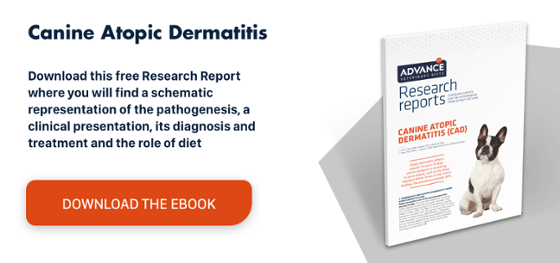Skin diseases in cats: a brief description
Cutaneous xanthomatosis
Xanthomatosis is caused by a primary genetic defect or a metabolic disorder, such as hyperlipidaemia and diabetes mellitus induced by megestrol acetate or high-fat diets, and courses with the formation of multiple xanthomas. Patients develop pruritus, but rarely shows signs of pain, and the papules are surrounded by an erythematous halo. They are located at the distal extremities, head and bony protuberances.
Treatment of this condition consists of controlling the cause of the lipid metabolism abnormality. In cats with megestrol acetate-induced diabetes, the lesions gradually disappear when the drug is withdrawn. Topical immunomodulatory therapy should be applied to idiopathic cases.
Demodicosis
Demodicosis is a parasitic skin condition caused by one of two species of Demodex mites that can affect cats:
- Demodex cati. This mite is typically found in the hair follicles. It is not contagious and cannot spread between cats.
Dermal lesions, such as scabs, alopecia and the onset of miliary dermatitis, tend to be located on the head, ear, neck and eyelids. It may also cause pustules, papules and seborrhoea. The infection may present as otitis, with the mites having infested the ear canal. These cats usually have an underlying metabolic disorder or are immunocompromised.
Treatment depends on the identification and underlying cause of immunosuppression (if any). Antibiotics should be given for secondary bacterial skin infections and medications in topical formulations to eliminate the Demodex mites (immersion in lime sulphur), oral medications (milbemycin or ivermectin).
- Demodex gatoi. On the surface of the skin. Contagious for other cats.
Infection often pruritic, with alopecia on the extremities and flanks. Usually symmetrical. Cats may also have abrasions, hyperpigmentation and scaling.
Treatment must be given to all cats in the same home and is similar to that used for D. cati.
Dermatophytosis
Ringworm or dermatophytosis is a fungal skin disease and most cases are due to Microsporum canis infection. It is infectious and contagious.
Dermatophytosis causes nonspecific signs of alopecia, erythema and scaling, which means it is a possibility in the differential diagnosis of many skin diseases in cats.
Its treatment should combine systemic and topical therapies. This should include systemic (itraconazole or terbinafine) and topical antifungals, such as lime sulphur, miconazole cream, enilconazole solution or miconazole and chlorhexidine shampoo.
Leishmaniasis
Caused by the protozoan parasite Leishmania, leishmaniasis causes manifests in two forms in cats: as a skin reaction (hyperkeratosis, alopecia, nodules) and a visceral reaction (abdominal organs). It is believed that most cats which develop clinical signs have immune problems due to concurrent infections (e.g., FeLV), diseases (neoplasms, diabetes mellitus, autoimmune diseases) or immunosuppressive treatment.
The drugs used empirically in cats are allopurinol and meglumine antimoniate. However, treatment does not eliminate the infection, and the clinical signs may reappear. There is no leishmaniasis vaccine available for cats. Permethrin-based ectoparasite repellents are toxic to cats.
Sterile granulomatous/pyogranulomatous lesions
Conditions in which the primary lesions, or tissue masses, are solid, elevated and over 1 cm in diameter. These nodules are usually caused by the infiltration of inflammatory cells into the skin and are a reaction to internal or external stimuli. The main types are nodular dermatofibrosis, calcinosis cutis and malignant histiocytosis.
Medication will depend on the diagnosis and the cat’s condition. Blood and urine tests are needed every 6 months if long-term glucocorticoids are administered. If the animal takes dimethyl sulfoxide for calcinosis cutis, blood tests should be done every 1–2 weeks to monitor calcium levels.

